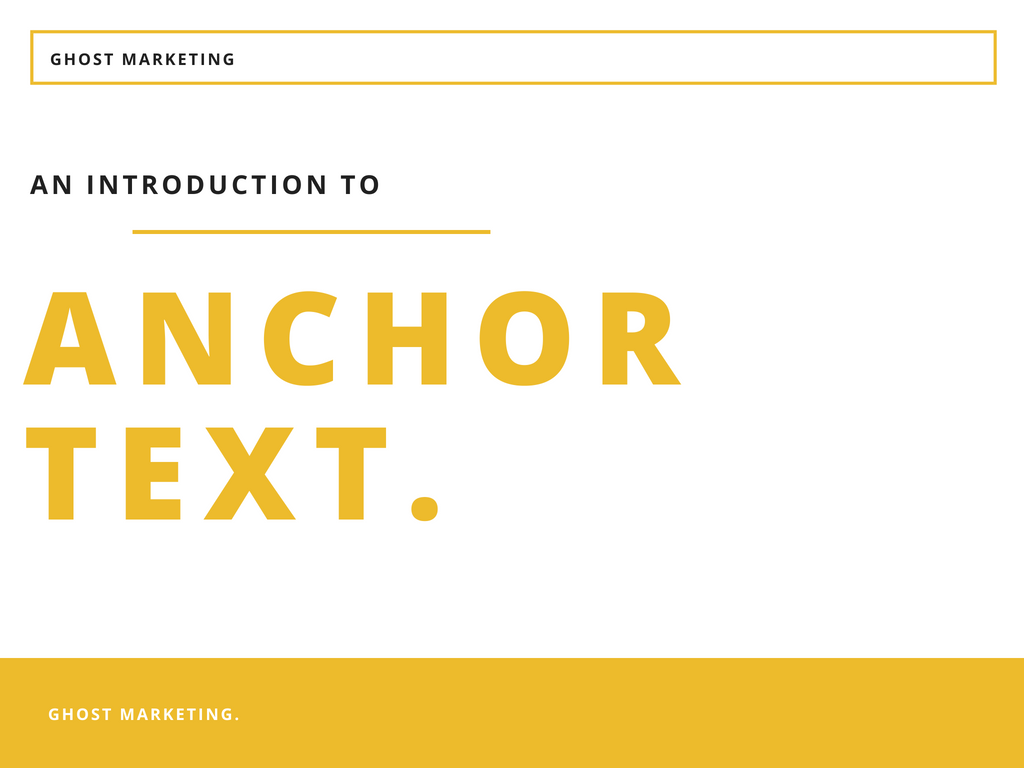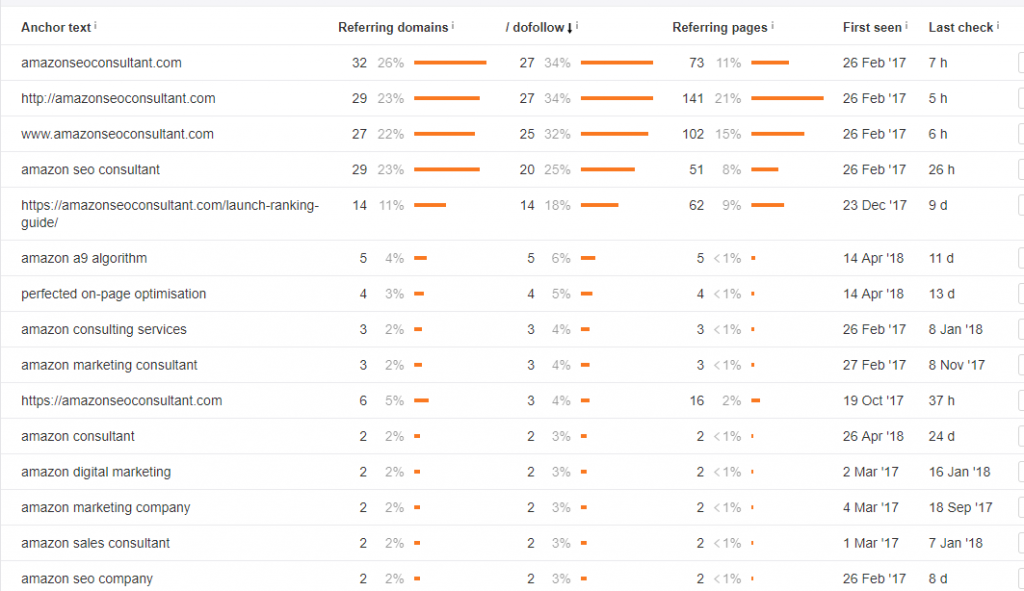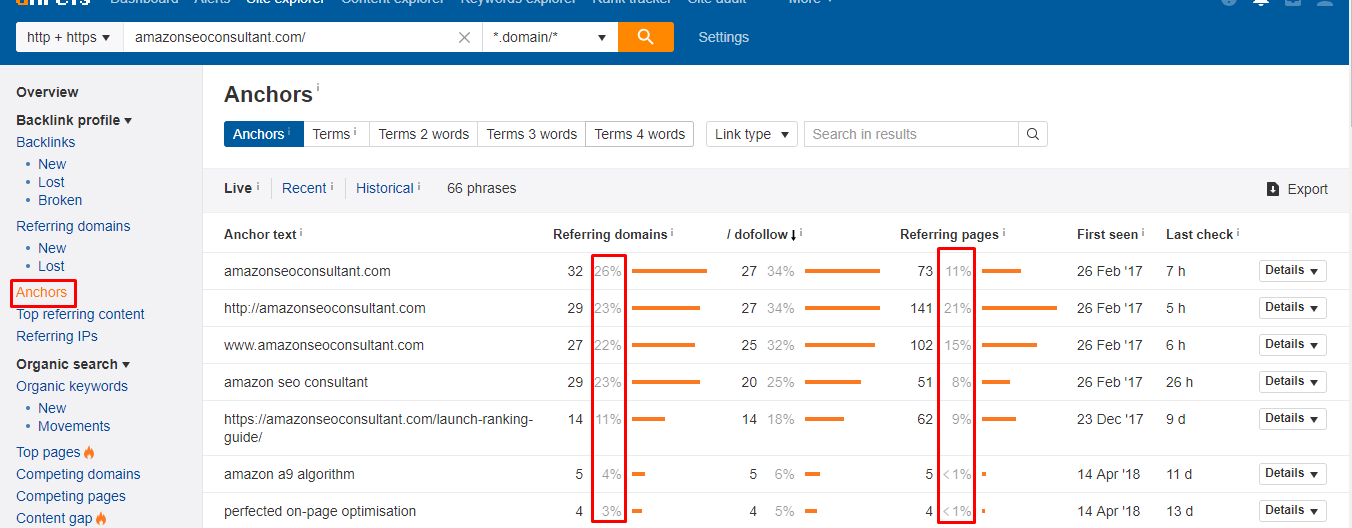Over optimisation through manual link building is something we see from prospects as an extremely common issue. Consequently, it can absolutely kill organic rankings through algorithmic or manual penalties.
These issues usually result through over-optimised anchor text links. This usually stems from a lack of knowledge about the correct anchor text diversity, to use when linking to your website/webpages. In this post we are going to outline in detail exactly what you need to do to ensure you stay well clear of these issues and how to solve over optimisation and link diversification issues.
Contents


 Anchor Text Definition
Anchor Text Definition
Anchor text is the clickable part of a link. It is what Google uses to determine what the topic being linked to is about. For example, the above link anchor is “clickable part of a link” and links to w3schools internal page about HTML links.
This anchor text tells Google the page being linked to has something to do with clickable links, as a result, the w3school’s page will increase in their organic rankings for the term “clickable part of a link”.
Multiple this from the entire index-able web and you have how Google is so far ahead of many of their competitors.
Why It Matters
So why does anchor text of links matter so much?
Before we dive into that, we want to quickly explain links in general, so everyone reading this guide is on the same page.
Links are extremely important in determining the quality of a website. Backlinks act as a vote of confidence from one website to another, the more votes of confidence you have, the higher you will rank for your specific terms. However, the more authoritative and relevant that vote of confidence (link) is to your specific page, the more powerful that backlink will be and hence the more movement you will have in the organic search results. You can see this in action in our 18 link case study that generated an extra £120k/year from just 18 links.
So back to why anchors matter.
Anchor text, as mentioned above, helps Google determine what your page is about and what to rank it for. This in theory means we should build keyword rich anchor texts right? Yes, you are correct. However, also be aware of the rules of over optimisation.
In the next part we are going to cover over and under optimisation of anchor text ratios. Additionally we are going to expand on what leads to these issues and how to solve them. Firstly, let us cover anchor text diversification if you have a brand new site and a few rules based on the type of domain you have.
Anchor Text Diversification Rules
There are a few standard practices we can use when it comes to link generation and anchor text. These are usually based on what type of website you have. Whether this be an ecommerce store, local business, national business, software product, all of which change the link building strategies that should be used. Subsequently, this effects the type of anchors that need to be in place. We will cover the two major examples below which are exact-match keyword domains and branded domains.
Exact Match Domain Anchor Text Recommendations
An exact match domain is a website that sits on a domain that is also the primary keyword the business is trying to rank. This can be anything from a local business, all the way through to product related terms. For example, a couple we are making up off the top of my head: Londonroofingcontractor.com, bestrazors.com and linkbuildingagency.com. All different niches, but all want to rank 1st in Google for their selected keywords which are already in their domain name.
How To Approach Link Building For Exact Match Domains
So how do we approach building links for these EMDs? We are glad you asked.
The process would be two fold, with one element we will solve later in the guide. The two key elements are to generate more generic and URL based anchors. For example, if we have an EMD that is: amazonseoconsultant.com. We have to ensure the links we build are not 30-50% branded anchors of “amazon seo consultant”, because this site would very quickly fall into the over optimisation category if that was the case.
Instead, the approach would be to reduce these “branded” links to only around 5-10% and focus more heavily on synonyms, variations, URL links & even generic options more.
This is important at the start of a white hat link building campaign when there are no links already pointing to the domain.
If you think you have fallen into this trap, do not worry. We have some fixes later on in the post, or if you are really worried get in touch.
Below is a screenshot of this website’s anchor text ratios. It shows how it is slowly becoming more URL and content focused with the target anchors and other variations such as “amazon marketing consultant”, or “amazon consulting services” which are still hyper relevant keywords, but not exact match keyword anchors.

Branded Domain Anchor Text Recommendations
On the other site, we have domains that are brands, nothing to do with what the company actually does or sell. This accounts for about 90% of the web. For example Apple, Facebook, Google, Bing etc. These brand names have an advantage longer term as it is easier to diversify into other markets and areas if required. They also are much less likely to get picked up for over optimisation of anchors, although generally it is much more clearly obvious if they do.
Here the focus should be on building branded, URL and variations of these links. You “can” also build more keyword focused links without becoming over optimised, as long as these links are not using the SAME exact match anchor text.
One of the key elements we have seen with sites that have been penalised is using the same linking anchor multiple times.
In our hypothetical situation, let us imagine we have a brand that does web design called Navy Crocodile. It is very unlikely someone is going to link to a brand new website called Navy Crocodile with “web design agency in London” for example. For someone to do that 3 times on different websites all with the same anchor text… 🚩🚩🚩🚩. That is a red flag.
But.
The catch is that this, over time as the brand expands rapidly, this can happen. Think about how many people would link to Google with the anchor text “search engine”, or even to Apple with the anchor text “best smartphone”. When you have millions of links it is going to happen, when you have less than a few thousand, it is a massive red flag. Always be aware of this.
It is not a one-rule approach
There is not a one size fits all guide to anchor text diversification, but the general rule is to base everything on your top ranking competitors. Using tools like Ahrefs, we can analyse the links of competitors in 20 seconds. Do this for the top 3 results and simply create a mini guide on what we should be doing in regards to what to use as the clickable anchor for links.
How To Find Your Recommended Anchors
This is luckily pretty easy, with a number of softwares on the market now. In our company, we use Ahrefs daily hourly.
Utilising their backlink analysis features, we can get all the data we need about target anchors in a few minutes. Although 3 rules to be aware of when doing this:
- Authority sites do not need to play by the rules. Amazon for example can get 50 anchors linking with the exact same anchor text to an inner page and still rank 1st. We are not Amazon, so bear this in mind and remove these results from general recommendations.
- Exact Match Domains – Remember these sites can get away with more, in most cases, if they are relating the brand as being their primary keyword. However, it is also impossible to think of a brand that is also their PRIMARY KEYWORD.
- Internal pages have different rules to homepages. Internal pages such as content pieces, are going to live by different rules than homepages.
The Process
Google your primary keyword and get the top 5 ranking competitors. Ensure all of these have the same TYPE of page. By this, we mean if the term shows category pages, then ensure you are ranking a category page. If the terms show homepages, then only get the top 5 homepages etc etc.
Once you have your 5 primary URLs simply paste them all into Ahrefs.

Note down the anchor text ratios of each page in an Google sheets doc and group all variations into 5 core elements. For instance, if we have a brand name of “Ghost Marketing”, then anchors such as ghostmarketing, ghost marketing, ghost marketing seo would be grouped in the “brand terms”. All URL variations go into the URLs column. Exact match is going to be the exact term to rank, so for example “link building agency”. LSI’s are variations of the exact terms, for example “link service” and “seo consultant”. Miscellaneous is everything else.

As you can see in the above example, we have a medium focus on brand, exact, LSIs and miscellaneaous generally. There is an outlier with the branded terms which we will semi-ignore. As a result, our “perfect” anchor text ratios would be approximately: 30% branded, 15% URLs, 12% exact, 25% LSIs and 18% misc or generic anchors. A generic anchor text is something such as “click here”, “more info”, but in some cases can even be a name of the person.
We dislike using too many exact match search anchors. You should never use the same anchor more than once, as a general rule. However, we can get round this using variations of the exact term and extremely closely related synonyms. In our example, this would be something like: link building agency, link building company, link building consultant, agency for link building and link generation agency. This ensures we are never using the exact same anchor more than once.
How to Fix Anchor Text Over Optimisation Ratios
Now that you know how to create a perfect anchor text strategy, what do you do if you are already over optimised with exact match, or brand match keywords?
Well, the solution is two fold, depending on the potential damage.
1.) Delete lower quality links if you can, or request them to be deleted by getting in touch with the webmaster of the site. If they are truly spammy, then you can always disavow them. This takes a very long time and is very tedious, so we recommend the other options.
2.) Build other types of links. If you have a high exact match anchor ratio, then just start building links with the other types of anchors, for example build branded, URLs and misc links. This will very quickly get you into the right place. But remember, if you are already ranked well, do not go overboard here. You do not want to decrease your anchor relevancy.
How to Solve Under Optimised Anchors
A better problem to have, but something that is still quite common. Essentially, here you will want to build a lot of keyword rich anchor text links with exact and mainly LSI based keywords with lots of variations and synonyms. This will quickly add trust and relevancy for those terms. We also recommend getting more relevant links in this case. For instance, niche relevancy and an exact match anchor can result in high ranking gains with only 1-2 links.
Relate Everything Back To On-page
A lot of key issues with over and under optimisation can be solved with on-page without ever touching a link.
The solution is pretty self explanatory. If you have your exact primary keyword in your title, H1, URL, image alt tags, H2 tags and a high keyword density, then you have built a high number of exact, or variations of the target keyword anchor text links, you will be over optimised.
To reduce overall optimisation for those target pages, simply reduce the on-page focus of these terms. Reduce overall keyword density, take out the primary keyword of the image, H2 and potentially use a variation in the H1 tag too. This results in increases without even touching a link, we actually saw this with a client this week. Simply de-optimising the on-page of a site resulted in massive increases for very competitive terms (screenshot below).

Relate it Back to Total Site Links/Anchors
Finally, remember to relate everything you do back to three core key important areas:
- Theme of the page – Does it make sense to have 50%+ target anchor phrases? Most of the time, of course not, but in some cases it actually does. So remember to check this.
- Competition – The top ranking competitors are showing you exactly how to rank already and the exact anchors they used to rank. Just copy this, it is way easier than testing it yourself.
- Searcher Intent – Remember to build pages out based on the TYPES of pages ranking. We mentioned this earlier, but essentially if product pages are ranking then do the same. If it is category pages then the same, a blog post, same, homepage, same… You get the picture.
Conclusion
Remember anchor text diversification is important, but it is not the be all and end all. Generating authoritative, relevant links is the most important part. It drives organic rankings and sales in a very efficient way. So do not over think it when it comes to anchors, just go with relevancy and keep it natural. If you have any questions, or would like to request a proposal please visit our link building process page.